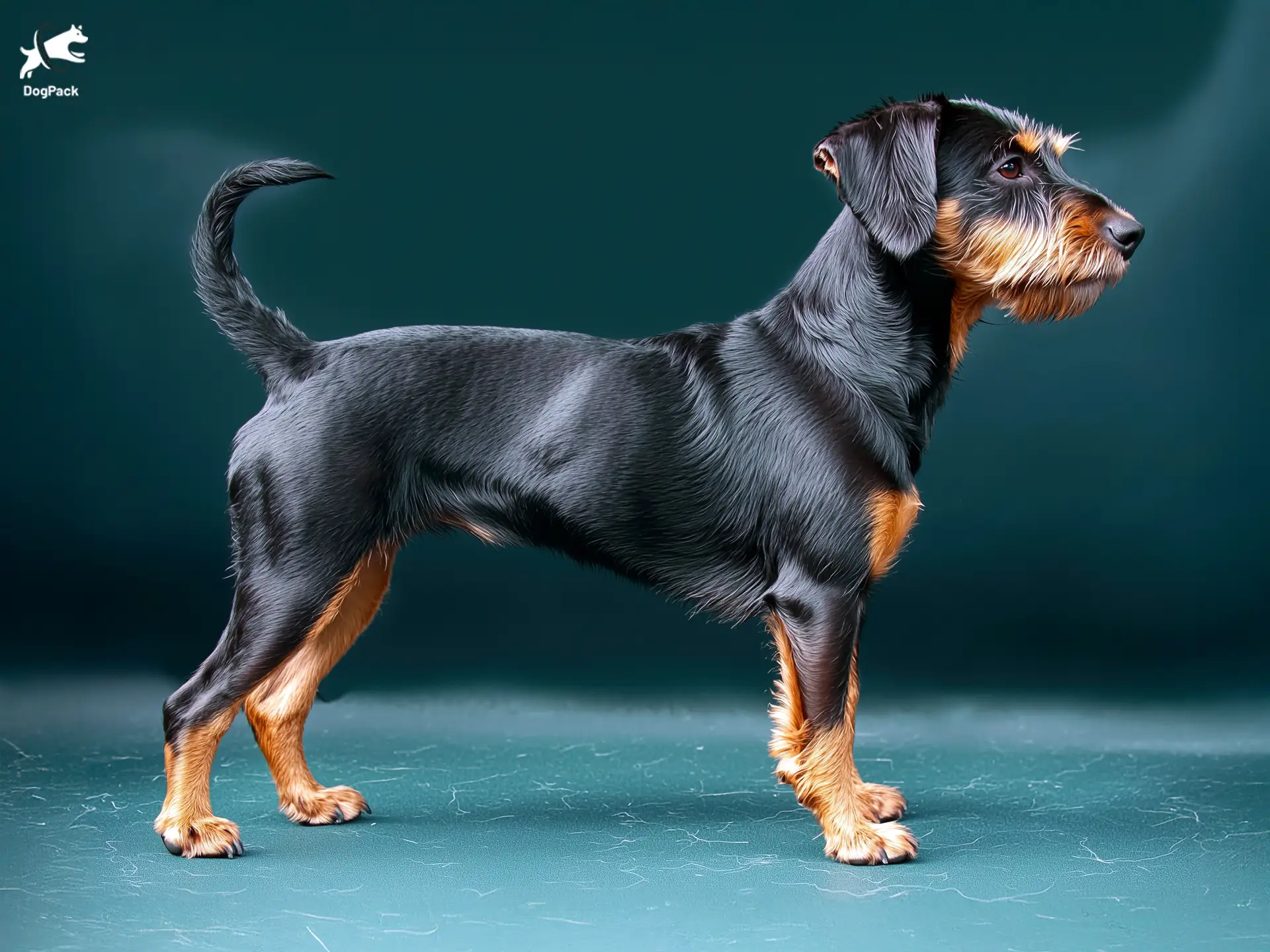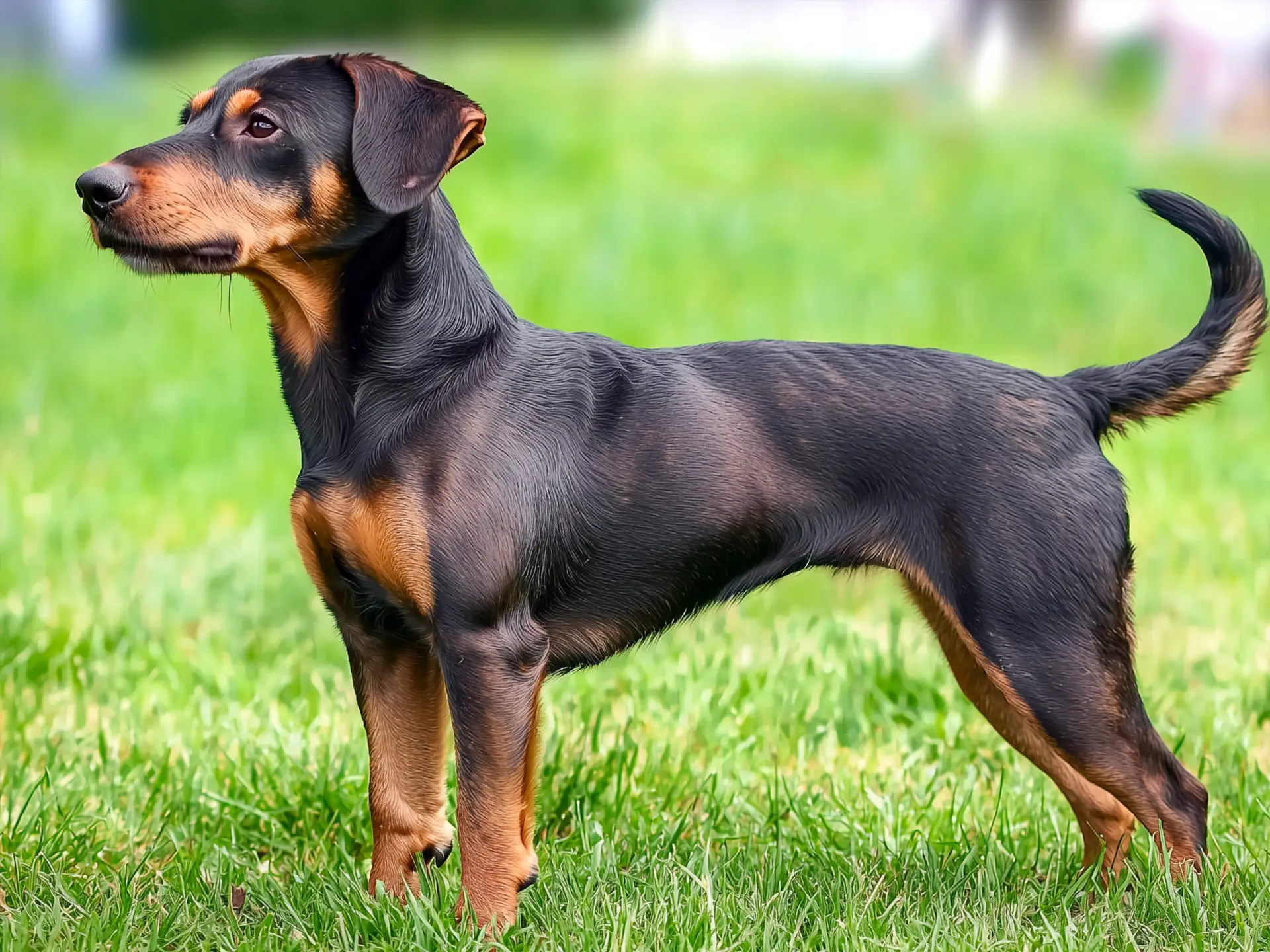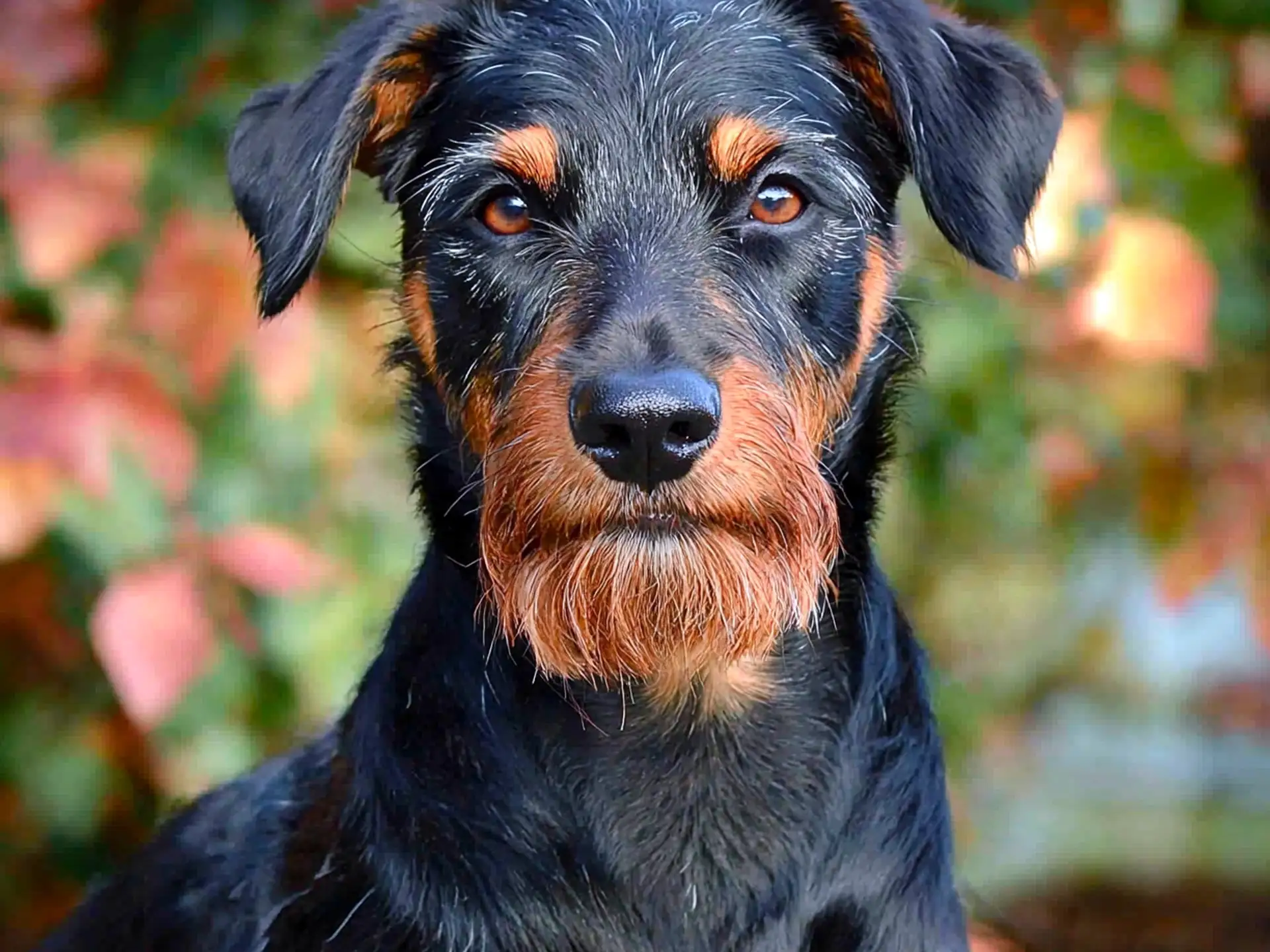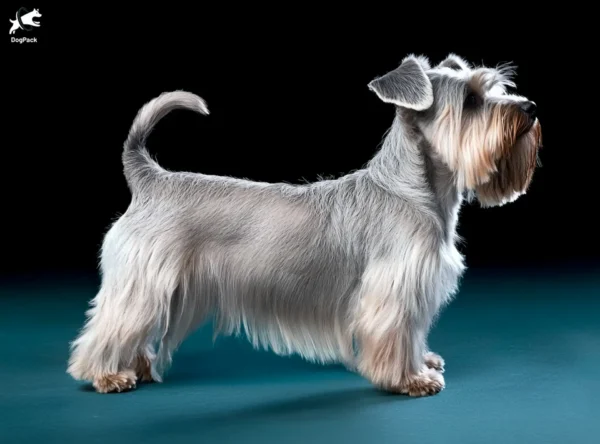Jagdterrier Dog Breed Info & Overview
If you’re looking for a small yet bold hunting companion, the Jagdterrier might just win you over. Bred to flush out game and work tirelessly in the field, this tenacious terrier has an unmatched drive. Intelligent and agile, it thrives with active owners who appreciate an adventurous spirit. Despite its serious work ethic, it can form a strong bond with dedicated families.
Characteristics
Pictures
Breed History
In the early 20th century, German hunters sought a spirited, hard-working terrier capable of tracking and flushing out game in challenging terrains. Their efforts produced a focused and resilient dog with impressive courage. Although relatively small, these determined canines quickly earned a reputation for bravery. Over time, selective breeding honed their hunting prowess, ensuring they could take on tasks larger dogs handled, with the same level of tenacity.
Legend has it that after World War I, a group of enthusiasts in Germany aspired to create the ideal hunting terrier, focusing on the dark coat color and sharp instincts. They refined various Fox Terrier bloodlines to establish the foundation of this new breed. The resulting pups were known for their unwavering drive and strong prey sense, making them perfect companions for dedicated sportsmen.
Though still uncommon outside Germany, this proud “German Hunt Terrier” gradually gained recognition among fans of rare dog breeds. It remains prized for its athleticism and hunting skills. Today, while it may not be a household name, the Jagdterrier has a devoted following. Owners appreciate its indomitable spirit, strong loyalty, and willingness to venture into the toughest terrains—traits rooted in its storied German heritage.
Temperament, Personality
If you enjoy a spunky companion that never seems to tire, this terrier fits the bill. It’s alert, single-minded when on the trail of prey, and demands plenty of mental challenges. While not naturally reserved, it can be wary of strangers until it deems them trustworthy. Early socialization helps channel that trademark terrier confidence into a well-adjusted, yet still spirited, family member.
This breed may be small, but it exudes a feisty demeanor that can rival bigger canines. In a home setting, it often bonds closely with its primary caretaker, displaying steadfast devotion. With children, a well-trained and socialized dog can be patient and gentle, though always supervise playtime due to its intensity. Other pets, especially small animals, might spark that hunting drive if introductions aren’t managed carefully.
Despite its hunting origins, the Jagdterrier can offer sweetness behind its resolute exterior. It thrives on having a mission—puzzle toys, training games, or even advanced canine sports keep it mentally engaged. A sense of humor goes a long way with this tenacious pup; it’s likely to make you laugh with its clever antics. Just remember to be consistent and patient while nurturing its driven personality.
Physical Characteristics
Lean and athletic, this compact terrier boasts a sturdy frame built for agility. Standing around 13–16 inches, its body is slightly longer than tall, allowing for swift, ground-covering strides. There’s a definite readiness in its posture—eyes always scanning, ears perched forward. You might notice a fearless gleam in those dark brown eyes, hinting at the breed’s unwavering courage in the field.
The coat can be either rough or smooth, usually dark in color with tan markings on the muzzle, chest, and legs. Whether wire-haired or short-haired, both varieties share a weatherproof quality that serves them well in harsh conditions. While petite, this terrier’s muscles are well-defined, enabling it to scramble through thick brush and tight spaces during a hunt.
Look closely and you’ll see features that distinguish it from other small dog breeds. The muzzle is strong, designed to grip onto prey, and the ears fold neatly, giving an alert and purposeful expression. Its tail is often docked in regions where permitted, but some owners keep it natural. This terrier’s robust physique and focused gaze confirm its role as a skilled, fearless worker.
Health Issues
Overall, this breed is known for its hardiness, although no dog is immune to health concerns. Owners should watch for common terrier ailments like skin irritations or allergies. Regular vet checkups help catch early signs of potential joint problems, especially if the dog has been particularly active in rough terrain. Keeping vaccinations and parasite prevention current is also vital for a hunting companion frequently outdoors.
Eyesight is crucial for tracking game, so routine eye exams are recommended. Some lines may carry genetic issues such as lens luxation, though careful breeding has minimized these risks. A balanced diet, tailored exercise, and mental engagement support overall wellness. Also, be mindful of ear care; any terrier rummaging through brush is prone to debris buildup, which can lead to painful infections if ignored.
To maintain the Jagdterrier’s peak condition, consider annual screenings for hips and elbows. If you’re working your dog in challenging conditions, be vigilant for sprains or minor cuts. Swiftly addressing injuries can keep small issues from becoming big complications. When owners stay proactive and form a good partnership with a trusted veterinarian, these determined dogs can enjoy a strong, healthy life well into their golden years.
Grooming Needs
Although the coat is relatively low-maintenance, this terrier still benefits from regular upkeep. Weekly brushing helps reduce shedding and keep the skin healthy, especially if it’s the rough-coated type. A soft-bristle brush or a grooming glove typically does the trick. Frequent baths aren’t necessary—unless it’s been rolling in something suspiciously stinky out on the trail, which is always a possibility with this feisty adventurer!
Check the ears after each outing to remove any seeds or debris that could cause irritation. Additionally, trim the nails about every three to four weeks, or sooner if you hear clicking on hard floors. Dental hygiene is essential, too, as small-to-medium terriers can be prone to tartar buildup. A simple weekly tooth-brushing habit can help prevent dental problems down the road.
One bonus of this breed’s coat is the minimal odor, making it a good fit if you prefer a lower “dog smell” factor. If you opt for professional grooming, a quick tidy-up and thorough comb-out typically suffice. The Jagdterrier thrives with owners who value practical maintenance—just enough effort to keep the coat and skin healthy without hours spent preening a high-maintenance pup.
Exercise Requirements
High energy is an understatement when describing this lively companion. It loves running, exploring, and investigating every nook of a hiking trail. Expect to dedicate at least one to two hours daily for walks, structured play, or advanced activities like scent work. Without proper outlets for its drive, this terrier can get into mischief—don’t be surprised if it starts redecorating your yard with freshly dug holes!
Interactive play is a must. Fetch, tug-of-war, and puzzle toys that challenge its keen sense of smell can channel this breed’s zest for life. A short jaunt around the block won’t cut it for a dog that was designed to chase down elusive quarry. If you have access to safe open fields, letting it run off-leash (in a secure area) can be a highlight of its day.
Remember to keep your Jagdterrier mentally engaged. Incorporate brief training sessions within playtime to sharpen obedience while burning energy. Nose work games mimic natural hunting instincts, making them especially gratifying. If you share an interest in dog sports, consider agility or barn hunt. This terrier’s athleticism and determination often shine in competitive settings, giving both of you a fun way to bond.
Training Tips
Because of its intense focus, this breed responds best to consistent, firm, yet gentle training. Short, upbeat sessions that engage its hunting instincts or problem-solving skills can produce remarkable progress. Positive reinforcement, like treats or a favorite toy, typically works wonders. Keep distractions to a minimum at first—this little hunter’s nose can lead it astray if the environment is too chaotic.
Early socialization is essential for curbing potential issues like over-guarding or aggression toward other animals. Gradually introduce new people, places, and stimuli so it learns to remain calm and confident. If left to its own devices, the Jagdterrier’s powerful prey drive might take over. Be prepared to reinforce commands such as “leave it” or “come” when you sense it’s about to sprint after something interesting.
Enrolling in obedience classes can be beneficial, both for basic manners and for building trust between you and your dog. The breed thrives on mentally challenging tasks, so advanced obedience, trick training, or even specialized hunting workshops can keep it excited to learn. Patience is key: remain consistent, celebrate small wins, and tailor each lesson to your Jagdterrier’s eager but sometimes stubborn spirit.
Nutrition, Diet
Because of its high-energy nature, the Jagdterrier typically needs a nutrient-dense formula with quality proteins. Adult dogs often do well on around 1 to 1.25 cups of high-protein kibble split into two daily meals. If your terrier is working in the field or training intensively, you might bump this up slightly to maintain muscle mass and stamina. Look for foods specifically formulated for active hunting breeds.
Including omega-3-rich ingredients, such as fish oil or flaxseed, can support joint health—especially if your pup is racing around tough terrain. Many owners also supplement with small portions of fresh meats or organ-based treats to keep the diet interesting. Avoid overfeeding; extra weight puts strain on joints and reduces agility. A simple body condition check—feeling ribs without excessive fat—helps maintain that lean, ready-for-action physique.
Keep treats purposeful. Training rewards can be freeze-dried liver or lean meat bits that don’t add empty calories. Monitor how your Jagdterrier handles certain carbs or fillers; some individuals might have sensitivities. Fresh water should be available at all times, especially after intense sessions in the field. With the right balance of protein, fats, and essential nutrients, you’ll have a terrier primed for every adventure.
Adoption, Breeders
This breed’s rarity can make finding a reputable source challenging. Start by contacting the German Jagdterrier Club (site in German) or checking local breed associations for referrals. Enthusiasts often maintain close-knit communities, so word of mouth can lead you to trustworthy breeders. Be wary of online ads offering “cheap puppies” without registration or health guarantees.
For those interested in rescue, occasionally a Jagdterrier shows up in general terrier rescue groups. Persistence is key. Consider contacting Petfinder for any listings of German Hunt Terriers in your area. Adoption can be incredibly rewarding, especially if you’re ready to accommodate a terrier’s specialized needs. Sometimes older dogs with some training experience are available—ideal if you prefer skipping the puppy stage.
When you meet with a breeder, ask about health tests, pedigree records, and any hunting or performance titles in the lineage. A responsible breeder will also question your lifestyle to ensure this energetic pup is a good fit. Beyond paperwork, observe how the dogs behave—healthy Jagdterriers should be alert, active, and well-socialized. Patience in finding the right match ensures a happy relationship for years to come.
Family Pet?
While undeniably affectionate with its close circle, this terrier isn’t for everyone. Families with older, dog-savvy kids who respect boundaries and enjoy active outings may find a loyal companion in this breed. Consistent training and an outlet for energy—like daily hikes or an active backyard game—go a long way. Younger children might be overwhelmed by its tireless playstyle unless supervised carefully.
Having other pets requires thoughtful introductions. This dog’s strong prey drive could create friction with smaller animals. Nevertheless, many households successfully integrate a Jagdterrier by setting firm rules and ensuring each pet has its own space. If you’re the outdoorsy type, this determined hunter can be a fantastic buddy, always ready for the next family adventure, be it camping, fishing, or simply running around the local park.
Be prepared to invest time in mental stimulation. Puzzle feeders or hide-and-seek treat games can keep it engaged while indoors. If your family is enthusiastic about dog sports, you’ll discover a competitor at heart. While some might question whether such a driven breed can settle into family life, owners who meet its exercise and training needs often see a devoted, fun-loving member of the household.
Right For You?
If you’re an active person who thrives on outdoor pursuits, a Jagdterrier could be your perfect co-adventurer. It will happily accompany you on rugged trails, help flush out wildlife, and keep you on your toes at home. Prospective owners should be ready for daily stimulation—both physical and mental. Lazier lifestyles or limited space won’t suit this terrier’s boundless verve.
Admittedly, this breed demands a certain level of dedication. Maintaining consistent training, regulating a high-energy diet, and tackling robust exercise schedules isn’t for everyone. If you take pride in forging a deep bond through shared activities, you’ll likely adore this spirited dog. However, if you prefer a laid-back companion who requires minimal engagement, consider exploring more relaxed breeds for a better match.
Homes with secure yards, dog-savvy family members, and a sense of adventure typically mesh best with the Jagdterrier’s lifestyle. Potential owners should carefully evaluate whether they can commit to the dog’s unwavering drive and intense personality. Done right, the result is a genuine, affectionate partner at your side—ready to discover new trails, chase fresh scents, and fill your days with lively, terrier-style charm.
Conclusion
Curious, determined, and always on the lookout for a new challenge, the Jagdterrier is a splendid companion for the right person. While not everyone can keep up with its demands, those who love a rugged, high-energy partner will appreciate its intelligence, loyalty, and unstoppable zest for life. If you’re seeking a smaller terrier with a big work ethic and an even bigger heart, this breed could be your perfect fit.
FAQs
-
How does the Jagdterrier’s hunting drive compare to other terriers?
The Jagdterrier has an exceptionally high prey drive, even compared to other terriers. Bred specifically for versatile hunting, they excel in tracking, flushing, and pursuing game. Their strong instincts make them relentless in the field but require careful management in pet homes.
-
Can a Jagdterrier be kept as a full-time house pet?
While possible, keeping a Jagdterrier as a house pet requires significant daily exercise and mental stimulation. Without a job or structured activities, they may develop destructive behaviors or become overly restless. They are best suited for active owners who engage them in hunting, sports, or advanced training.
-
Are Jagdterriers known for their swimming ability?
Yes! Unlike some terriers, the Jagdterrier is naturally skilled in water retrieval. They were bred for hunting both on land and in water, making them strong, confident swimmers. Their love for water makes them ideal for tasks like duck retrieval or water-based scent work.
-
How protective is a Jagdterrier compared to other hunting breeds?
The Jagdterrier is highly alert and fearless, making them protective of their owners and territory. While not a traditional guard dog, their bold nature means they won’t back down from a threat. Proper socialization is key to ensuring their protectiveness doesn’t become excessive aggression.
-
Can Jagdterriers be trained for urban life?
It’s challenging but possible. Jagdterriers thrive in rural or working environments, but with structured training, they can adapt to urban settings. They need daily vigorous exercise, puzzle toys, and scent-based games to prevent frustration. A home with a secure yard is strongly recommended.
Breed Ratings
The Jagdterrier is smart and quickly picks up commands, though its strong will means consistent training is essential.
Lively and adventurous, this terrier loves games and interactive puzzles that let it use its hunting instincts.
Bred for stamina, it requires daily vigorous exercise and thrives on challenging physical activities.
While not heavy shedders, they still benefit from weekly brushing to keep loose fur in check.
Exceptionally high, these dogs were developed to hunt, so early socialization with smaller pets is crucial.
A low-maintenance coat needs occasional brushing and bathing, which most owners find simple.
Eager to learn but can be strong-willed, so firm, positive training techniques work best.
This social breed can become bored or destructive if left solo for long periods.
Vocal when triggered by prey or strange noises but not excessively noisy without cause.
Low drool production, making them relatively tidy compared to some other hunting breeds.
Generally okay with other dogs if socialized early, yet can be assertive with unfamiliar canines.
Sturdy and hardy, with few breed-specific issues, provided proper preventive care is maintained.















